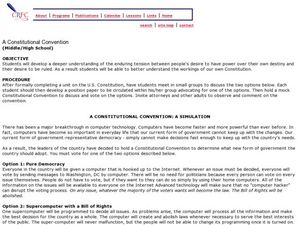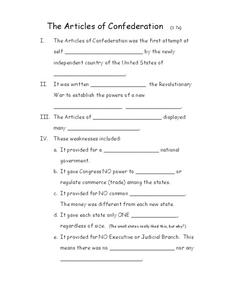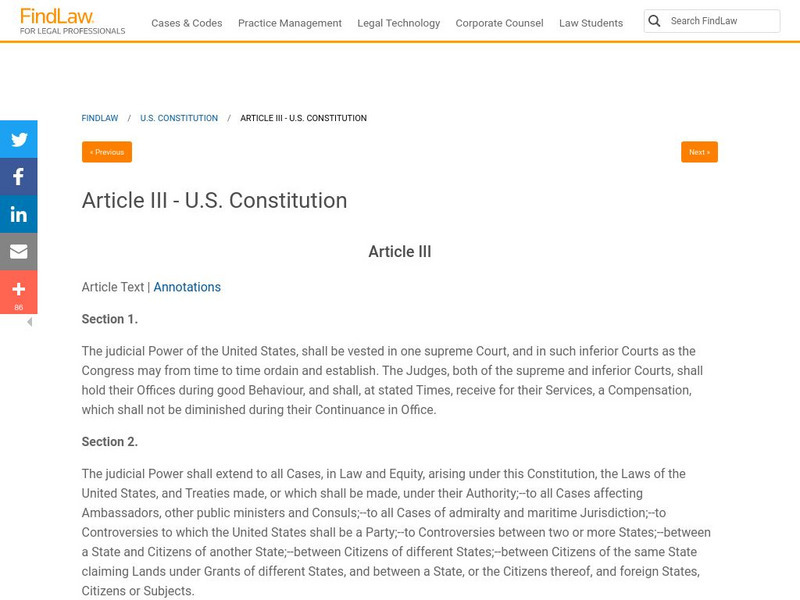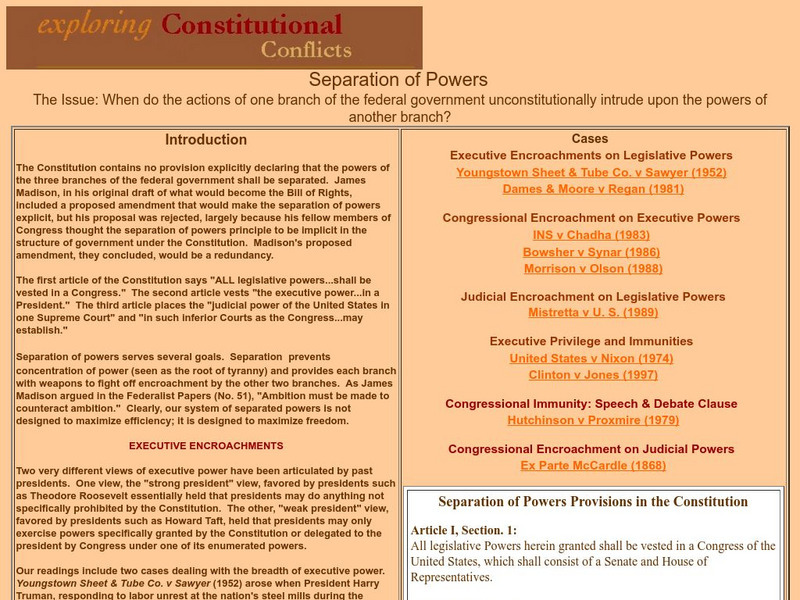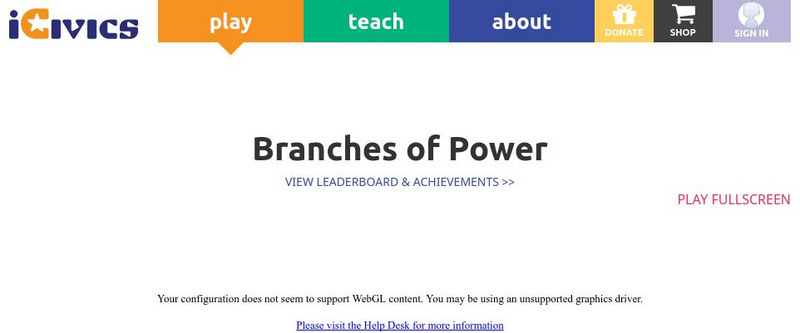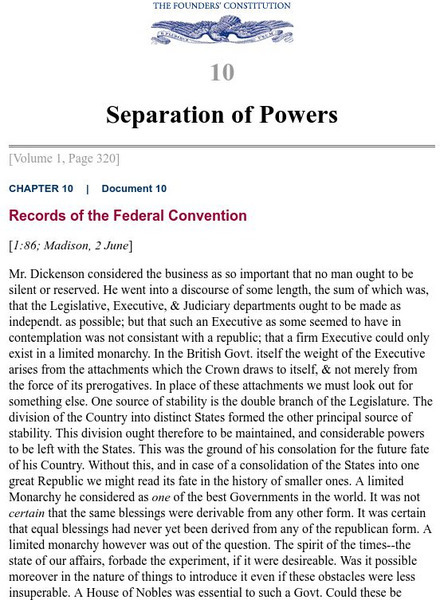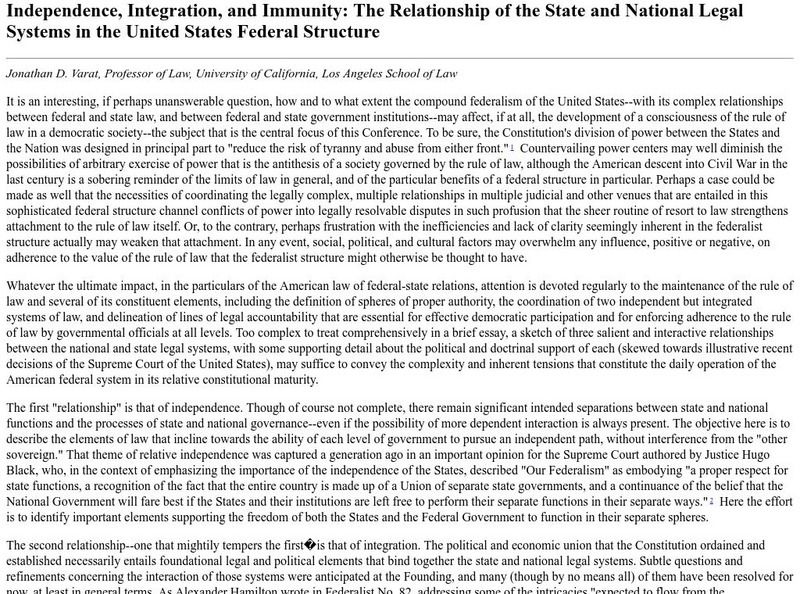Curated OER
Personal History
Fourth graders gain an appreciation of knowledge about recent history by interviewing senior citizens. They summarize their interviews and organize them into a written presentation.
Curated OER
Capitol vs. Capital
Pupils construct time lines to show the order of significant events in Ohio history. They explain how Ohio progressed from territory to statehood.
Curated OER
Houghton Mifflin Social Studies/Chapter 13, Lesson 2 California Fights Smog (pp. 296-300)
Third graders look into certain environmental problems. The governmental branches are investigated and how government takes care to solve problems of the environment.
Curated OER
Michigan Constitution and the Legislative Branch
Students explore online resources to compare and contrast the different constitutions the state of Michigan has had. They continue their exploration of various websites, focusing on the legistlative branch and the homepage of their local...
Curated OER
Organization of Fairfax County Government
Students identify Fairfax County government as council-manager government, describe term of office held by members of Board of Supervisors and districts they represent, how Chairman of Board of Supervisors is elected and term and...
Curated OER
Bill of Rights -- Texas v. Johnson, 1989
Learners examine the First Amendment of the Bill of Rights. During a visit to the George Bush Presidential Museum, they watch a video about the Texas v. Johnson flag burning case. In groups, they discover the role of the Supreme Court...
Curated OER
George to George
Learners use the internet to research the beginnings of the United States government. In groups, they examine the presidency of George Washington while they are guided along a museum tour. They end the lesson by discussing the changes...
Curated OER
Grade Five Vocabulary
In this vocabulary instructional activity, students match vocabulary words to definitions, 15 words total. Worksheet contains links to additional activities.
Curated OER
A CONSTITUTIONAL CONVENTION: A SIMULATION
Students discuss two computerized options to change the current U.S. government. In this Constitutional Convention lesson, students write a statement advocating for one of the choices and participate in a mock modern Constitutional...
Curated OER
The Articles of Confederation
In this Articles of Confederation activity, students fill in blanks in an outline about the Articles. No text reference is given.
Curated OER
Affidavit and Flyers from the Chinese Boycott Case
Young scholars divide into small groups and study one of the three union flyers. Groups share their findings with the whole class and clarify unfamiliar vocabulary terms.
Thomson Reuters
Find Law: Article Iii: Judicial Power
Annotations to Article III on the characteristics and attributes of judicial power as related to specific Supreme Court decisions. The author distinguishes between judicial power and jurisdiction.
National Endowment for the Humanities
Neh: Edsit Ement: The Supreme Court: The Judicial Power of the United States
In this lesson plan, students will consider "The Supreme Court: The Judicial Power of the United States." The plan includes worksheets and other student materials that can be found under the resource tab.
University of Missouri
Exploring Constitutional Conflicts: Separation of Powers
When do the actions of one branch of the federal government unconstitutionally intrude upon the powers of another branch? This article surveys the history of this question in historic Supreme Court cases.
iCivics
I Civics: Judicial Review
This lesson explores the case that established the power the Supreme Court has today. Students will learn how the decision in Marbury v. Madison influenced the structure of the third branch, and how the Court's use of judicial review can...
US National Archives
Nara: Charters of Freedom: The Power of the Courts: Marbury vs. Madison, 1803
Website with primary source material on the making of the U.S. government and Constitution explains how Marbury vs. Madison brought the power of Judicial Review to the Supreme Court.
Independence Hall Association
U.s. History: Judicial Branch: The Power of the Federal Courts
An explanation of the power the federal courts hold in the American judicial branch of government. Find a quiz to test understanding.
PBS
Pbs Learning Media: The Powers of Government
Students learn how the three branches of the United States government work together and the powers that the Constitution assigns to each branch-legislative, executive, and judicial.
US National Archives
Docs Teach: Separation of Powers or Shared Powers
In this activity, young scholars will analyze documents that illustrate the relationship between the legislative, executive and judicial branches. Using the scale in Weighing the Evidence, students will decide whether the United States...
iCivics
I Civics: Branches of Power
Do you like running things? Branches of Power allows you to do something that no one else can: control all three branches of government! You'll have the power to write any laws you want about issues you choose. Careful, though, there's a...
US Government Publishing Office
Ben's Guide to u.s. Government: Judicial Branch (9 12)
Provides a brief overview of the judicial branch of the federal government. Discusses the origin of the judicial branch, the concept of judicial review, and functions of the judicial branch. Links to more information about the U.S....
University of Chicago
The Founders' Constitution: Separation of Powers
Federal Convention on the Separation of Powers as recorded during debate at the convention, June 2, 1787.
Center For Civic Education
Center for Civic Education: Relationship of State and National Legal Systems
This lengthy essay describes the balance between state and federal judiciary courts and touches on independence, integration, power limits and immunities.
iCivics
I Civics: Games: Branches of Power
Interactive and educational game puts players in control of all three branches of government and tests their abilities to turn issues of concern into full-fledged laws.








